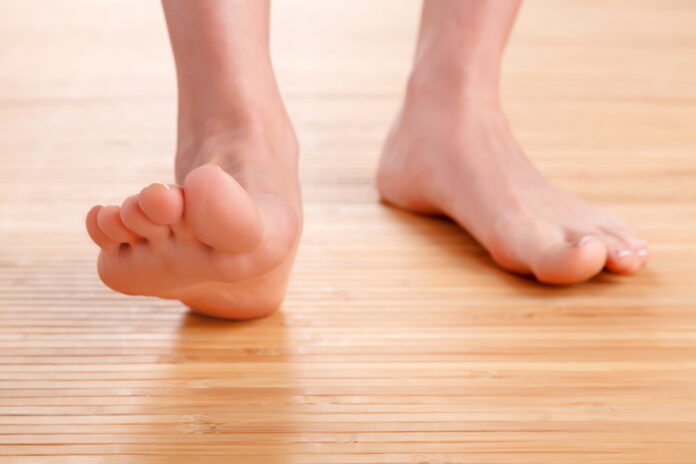
By Winston Lee L. Ac, Ph.D, KMD
It refers to the feet’ horizontal angle when a person walks is more than 15 degrees, and the shape is similar to the “eight” of a Chinese character. Usually, you don’t recognize it. But if you closely look at the heel part of a shoe that has been used for a long time, you would find only the outside is worn a lot more than the other parts. When you go to the beach and walk on the sand, you can see your steps by looking back at the footsteps you have passed.
Some could say out-toeing gait is just a way of walking. But the symptom should be treated. Because one who has the symptom experience extreme low push-off power, running very poorly, feeling fatigues prematurely with any activity, poor overall balance, loss of interest in participating in sports or any activity, and poor coordination.
There are many causes of out-toeing gait. First, if your patient is an Asian, it could be the Eastern culture. There are so many cases of sitting with so-called noble legs while living a sedentary life. In this case, it is essential to reduce the amount of time for your patient to sit on the floor and switch to a chair-sitting lifestyle if possible. It is also good to do exercises to strengthen the thigh’s inner muscles to prevent the feet’ angle does not open. The easiest way is to kick while swimming. In this case, you need to do the kick by applying strength to the tip of your toes, attaching between the knees, and straightening them, but the body moves forward, so the correction is made naturally.
The second most common cause is abdominal obesity. When the belly sags down due to the abdomen’s fat, it makes the pelvis tilt forward, causing the hip joint to automatically open from side to side. According to the same principle, among pregnant women, the belly comes forward in a short period, so they naturally walk the out-toed gait and return to normal after childbirth.
The practical method, in this case, is to reduce abdominal fat. Calorie control should also reduce weight, and abdominal exercises should be performed in parallel to reduce the so-called duck’s hip in which the pelvis tilts forward, and the hips protrude backward.
However, we could have an out-toed gait even though we rarely take a seat on the floor, and we have no abdominal obesity. If the cause of an out-toed gait is not related to cultural habit and obesity, this would be a case in which the feet’ angle spontaneously opens due to insufficient muscle mass or weak muscle power in the thigh and abdomen due to lack of exercise. The muscles behind the thigh and hip muscles are average, but if the muscles in front of the thigh are weak because they rarely walk or run, an imbalance between them causes the hip joint to open outward. To treat imbalance between front and back muscles, you can correct your out-toed gait if you continue to exercise for a long time, such as climbing stairs or jogging.
Even though there is an open-toed gait, there are cases where the knee and the back are stiff when walking for a long time for shopping, golf, or hiking. It is caused by an inappropriate impact applied to the knee, pelvis, and lower back due to the out-toed gait. In severe cases, arthritis of the knee or degenerative changes in the spine can lead to the lumbar disc herniation. Therefore, it is necessary to identify it early and follow the preventive measures above steadily. If pain has already occurred, it is safest and most effective to correct the spine and relieve muscle spasms by receiving chiropractic or acupuncture treatment by a specialist.
If you have a patient who has the symptom and you would like to recommend some for the patient, please keep those in mind. First, ask for using orthotic insert, which helps retrain muscles and regain a normal gait. These inserts help stabilize the heel and keep the patient’s foot aligned while walking.
Second and the last is stretching. Ask your patient to stretch 20 minutes every day. It will limber up muscles and avoid soreness or muscle stress.
































